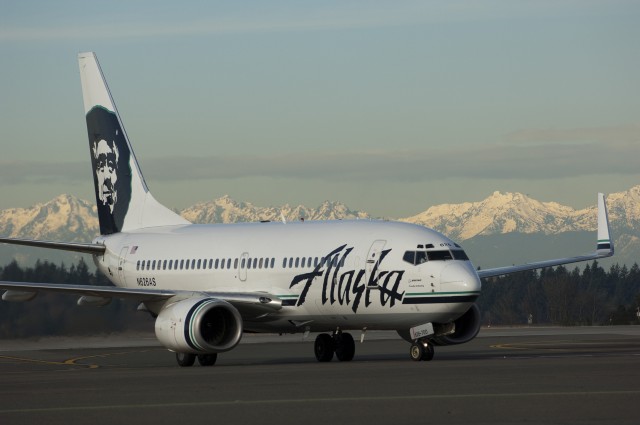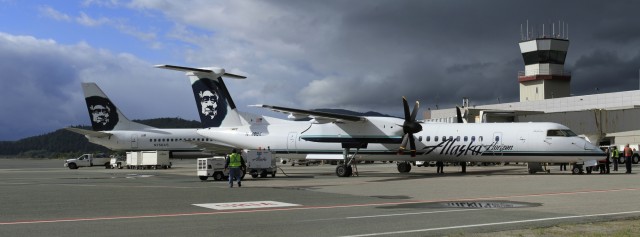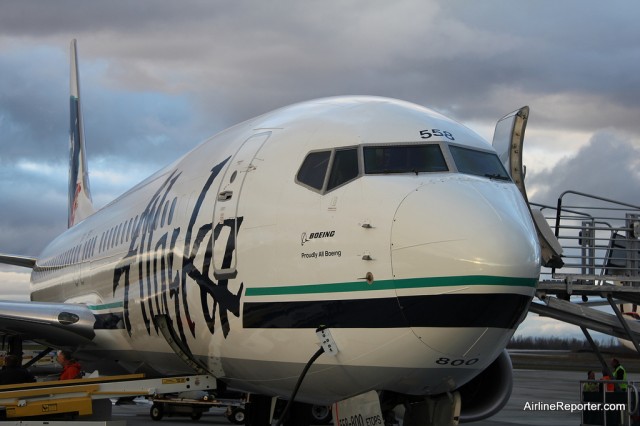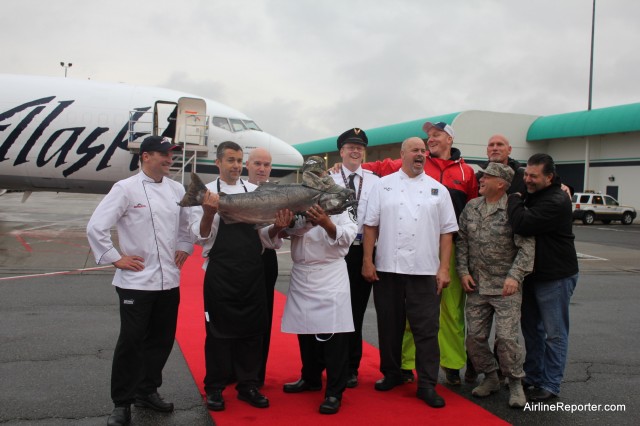
Alaska Airlines Boeing 737-700 at SeaTac Airport – Photo: Don Wilson | Port of Seattle
So, everybody and their brother has been writing about the recent announcement from Delta Air Lines that they’re further expanding their domestic flight schedule out of Seattle (SEA). There have been stories from mainstream media, miles/points bloggers, and (of course) industry watchers such as ourselves. Yet, we wanted to talk amongst ourselves and digest the information before weighing in.
Why is this a story? It’s because Alaska Airlines (AS), which is based out of Seattle, is supposed to be a partner airline with Delta. All three of the recently announced Delta routes are in direct competition with Alaska; actually 8 of Delta’s 13 domestic routes out of Seattle compete with Alaska.
As a guy who grew up in Washington State, and went to college at the University of Washington, I hold a special place in my heart for Alaska. An all-Boeing 737 operator, they have a loyal following in the Northwest. I just flew Alaska to and from Denver, and enjoyed their solid customer service, low-priced First Class upgrades, and great ground experience out of Seattle. (Although, as seems to be common from Denver, I got stuck on the Disneyland plane – am I the only one freaked out by flying on this bird?!).
 |
| Photo Courtesy of FlightAware.com |
Behold this special Alaska Airlines livery seen on a Boeing 737-800 (N568AS) by Leland Schmit at Paine Field yesterday. No, this is not a new livery for Alaska, but is, “a new special scheme dedicated to our employees,” Alaska explained via Twitter.
It has sweeping lines (that look quite a bit like New Zealand’s old livery) that says, “Employee powered,” on the rear of the fuselage. Although simplistic, I have to say that I like it — especially the blue/green gradient on the engine nacelles.

Alaska Airlines Bombardier Q400 on proving flight in Juneau, Alaska – Photo: AirlineReporter.com
Alaska Airlines (AS), through their wholly-owned subsidiary Horizon Air, recently announced that they would deploy some of their Bombardier Dash-8 Q400 aircraft to the State of Alaska. While Dash-8’s have long been a fixture in Alaska Airlines’ pacific northwest network via Horizon (I was flying them within Washington as a child), this marks their first major deployment up north.
Why would AS begin flying Q400s in Alaska? For the same reasons other carriers have moved towards regional jets and turbo props – operating costs, frequency, and flexibility. On the operating cost side, Q400s are extremely efficient, particularly compared to the Boeing 737-400s that are a mainstay of the AS fleet in Alaska. Bombardier estimates savings in examples like this to approach 40%. From a frequency and flexibility standpoint, more flights on a smaller plane can meet passenger demands, maximizing load factor while increasing service frequency, to the benefit of passengers.

Alaska Airlines increases fees, but also increases benefits. Photo by David Parker Brown / AirlineReporter.com
Hearing that an airline is increasing fees doesn’t really mean much anymore, since it is common news. It has worked out well for airlines to increase their profits and although passengers complain, they continue to pay them.
Alaska Airlines is planning to increase their checked bag and change fees near the end of this year. The new change fee will go from $75 online and $100 over the phone to $125. Passengers who make their changes 60 or more days before departure will receive no extra fees.
Currently, a checked bag will cost $20, but that will be increased to $25. A bigger increase are additional bags which will go from $20 per bag to $25 to a second bag and then $75 per bag after that. However, with the increased fees, Alaska is sweetening their Baggage Service Guarantee.
Unique to Alaska Airlines, if your bag does not arrive at the luggage carousel with-in 20 minutes of your aircraft arriving to the gate, you will receive a reward of sorts. Either a $20 discount code for future Alaska Airlines flight or 2,000 Alaska Airlines Mileage Plan bonus miles. As Alaska increases their fees, they will also increase the amount passengers will receive. The time still remains at 20 minutes, but if a bag does not make it in time, passengers will get either a $25 discount code or 2,500 Mileage Plan Miles.

The first Copper River salmon comes of the Alaska Airlines 737 Combi. Photo by Shannon Leigh Kehoe / AirlineReporter.com
I love my sleep and it takes quite a bit to get me up before the sun. The first Copper River Salmon brought in by Alaska Air Cargo is good enough reason as any.
This early morning event, which just wrapped up, has become a yearly tradition that started in 2010. Luckily in previous years there was no rain, but this year we were not so lucky. But being at Seattle-Tacoma International Airport, rain can never stop an event like this.
The Alaska Airlines Boeing 737-400 Combi arrived with 24,000 pounds of Copper River salmon to an eager group. One lucky (or unlucky) fish was chosen to be filleted and cooked up in a competition between multiple chefs.




